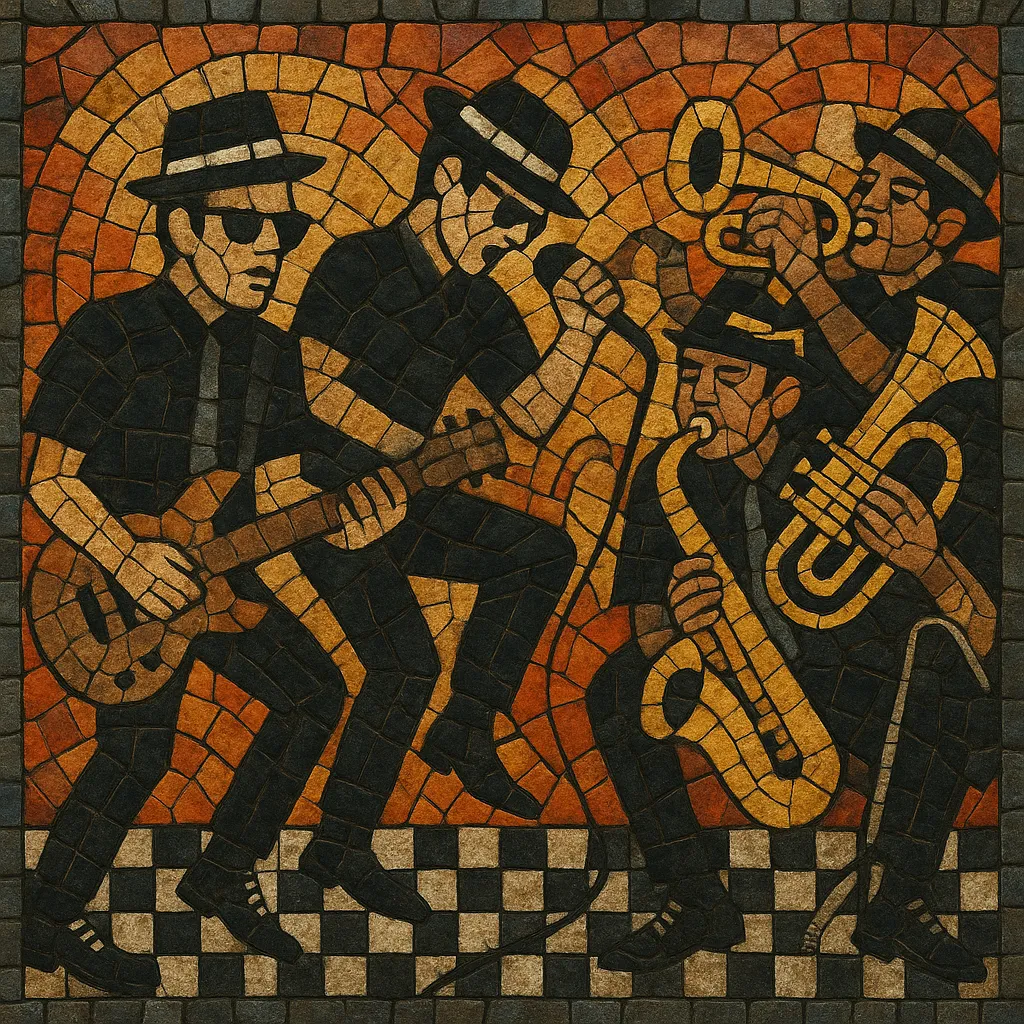Ska punk is a high-energy fusion of Jamaican ska rhythms and the speed, grit, and attitude of punk rock.
It pairs the skanking offbeat guitar upstrokes and syncopated bass lines of ska/rocksteady with punk’s fast tempos, driving downstrokes, and shout-along choruses. Horn sections (trumpet, trombone, saxophone) often carry bright, melodic hooks and call‑and‑response lines that bounce against the rhythm guitar’s offbeat chops.
Lyrically, ska punk ranges from wry humor and party anthems to sharp social and political commentary, reflecting both its Jamaican and punk roots. The result is music that is simultaneously danceable and aggressive, equally at home in a sweaty club pit and a festival sing‑along.
Ska punk emerged as UK bands of the 2 Tone movement blended first‑wave ska and rocksteady rhythms with the urgency of punk rock. While 2 Tone was its own scene, its tight upbeats, anti‑racist stance, and punk energy set the stage for a more overt fusion. In the United States, the style coalesced in the mid‑to‑late 1980s with groups like Operation Ivy (East Bay) and The Mighty Mighty Bosstones (Boston), who hardened the edges, sped up the tempos, and popularized horn‑driven arrangements—sometimes dubbed “ska‑core”.
The 1990s saw ska punk explode in North America and beyond, often grouped under the “third wave ska” umbrella. Labels such as Hellcat, Epitaph, Asian Man, and Mojo/Moon Ska helped spread the sound. Bands including Rancid, Sublime, Less Than Jake, Reel Big Fish, Goldfinger, Voodoo Glow Skulls, and Mustard Plug brought the fusion to college radio, MTV, and summer tours like Warped Tour. The era normalized horn sections in punk contexts and cemented the genre’s mix of humor, personal narratives, and social critique.
Mainstream attention dipped in the 2000s, but strong DIY circuits, international scenes (Japan, Mexico, Latin America, Europe), and festival circuits kept ska punk vibrant. Groups like Streetlight Manifesto pushed intricate horn writing and rapidfire rhythms, while later acts such as The Interrupters brought a hooky, radio‑friendly revival. Today the genre thrives through intergenerational bills, online communities, and cross‑pollination with pop‑punk, hardcore, and reggae rock.


